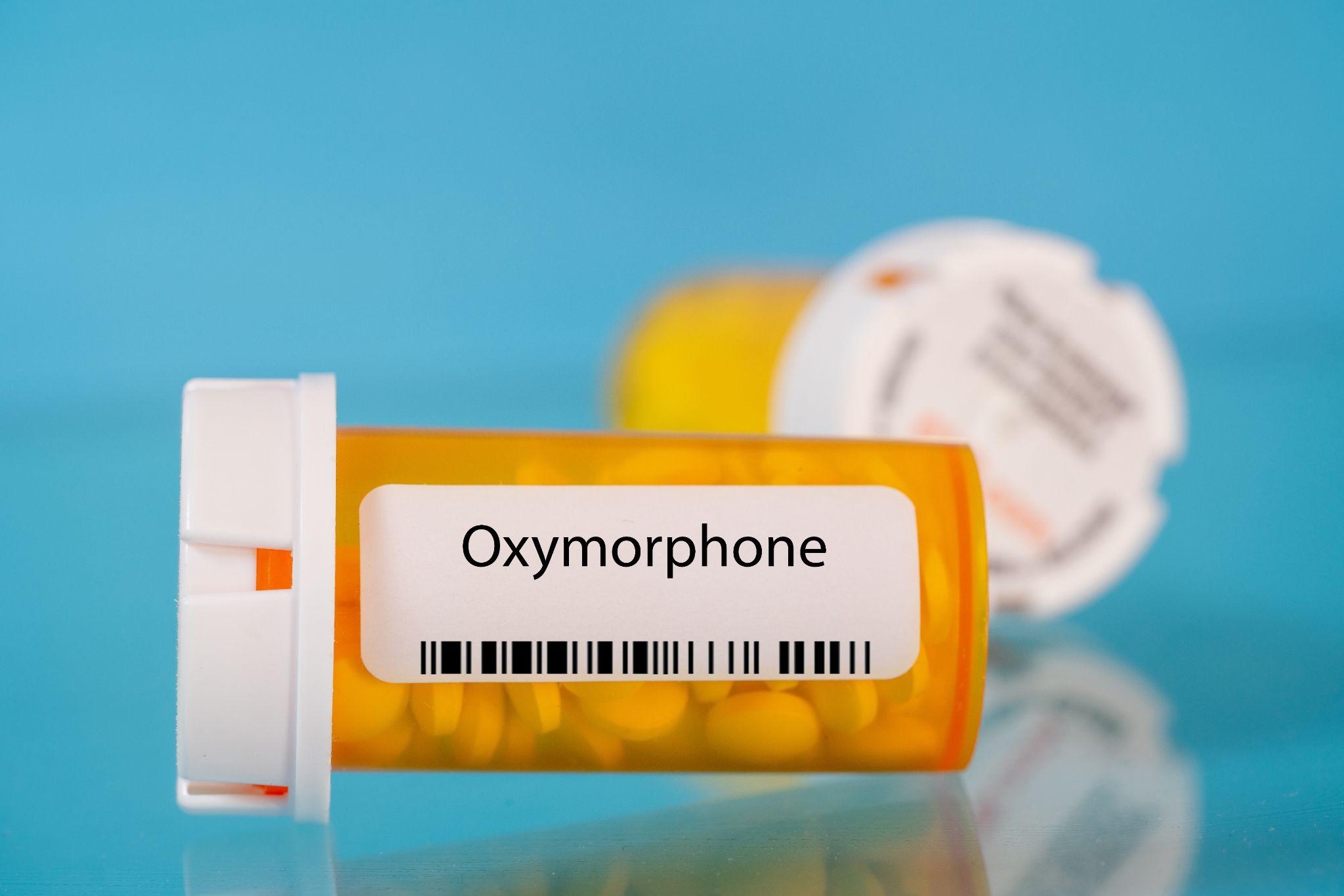Addiction to prescription drugs is a growing concern worldwide. Oxymorphone, a potent opioid, is one such drug often prescribed for severe pain. However, its potential for addiction and abuse is high.
Being aware of oxymorphone’s medical uses, its addiction potential, side effects, signs of addiction, and withdrawal symptoms is crucial for those affected by oxymorphone addiction and their loved ones.
What Is Oxymorphone?
Oxymorphone is a powerful opioid analgesic prescribed to manage moderate to severe pain. It is available in both immediate-release and extended-release formulations, catering to different pain management needs.1
Doctors often prescribe oxymorphone for patients who have not responded well to other pain medications, providing an essential option for effective pain relief. This drug is commonly used to manage severe postoperative pain, helping patients recover more comfortably after surgery.
In oncology, oxymorphone is often prescribed for cancer-related pain, offering significant relief to patients dealing with the intense pain associated with cancer and its treatments. Additionally, it is used to treat severe trauma pain, such as injuries from accidents, where other pain medications may not be sufficient.2
Side Effects of Oxymorphone
Taking oxymorphone can lead to various side effects, some of which can be uncomfortable and potentially harmful. Common oxymorphone side effects include:1
- Dry mouth
- Stomach pain or swelling
- Nausea
- Vomiting
- Gas
- Excessive sweating
- Flushing
- Fast heartbeat
- Red eyes
- Headache
- Feeling anxious or confused
- Itching
Addiction Potential and Why People Abuse Oxymorphone
While oxymorphone is effective in managing pain, it also has a high potential for addiction. The risk of addiction increases with prolonged use and higher doses. Here are some reasons why people abuse oxymorphone:
Euphoria and Relaxation: Oxymorphone can produce feelings of euphoria and deep relaxation, which can be very appealing to users. This pleasurable sensation often leads to repeated use, escalating into abuse and addiction.
Escaping Emotional Pain: Individuals dealing with emotional or psychological distress may turn to oxymorphone as a way to numb their feelings. The temporary relief from emotional pain can quickly become a cycle of dependence and addiction.
Physical Dependence: Even when taken as prescribed, oxymorphone can lead to physical dependence. Over time, the body becomes accustomed to the drug, requiring higher doses to achieve the same effect, which can lead to addiction.
Recreational Use: Some individuals abuse oxymorphone recreationally to enhance social experiences or out of curiosity. Recreational use often involves taking the drug in higher doses or through non-prescribed methods (e.g., snorting or injecting), increasing the risk of addiction.
Peer Pressure: In some cases, individuals may be influenced by peers to misuse oxymorphone. The desire to fit in or succumb to social pressure can lead to experimenting with and abusing the drug.
Signs of Oxymorphone Addiction
Recognizing the signs of oxymorphone addiction is vital for early intervention. Common indicators include:
- Increased Tolerance: Requiring higher doses to feel the same effect.
- Withdrawal Symptoms: Symptoms like anxiety, sweating, and nausea when not using the drug.
- Cravings: Intense urges to use oxymorphone.
- Neglecting Responsibilities: Failing to fulfill work, school, or home obligations.
- Social Withdrawal: Isolating from friends and family.
- Continued Use Despite Harm: Using oxymorphone even when it causes physical, mental, or social problems.
Withdrawal Symptoms from Oxymorphone
Withdrawal from oxymorphone can be challenging and uncomfortable. Symptoms can range from mild to severe and often include:1
- Muscle and bone pain
- Insomnia
- Diarrhea and abdominal cramps
- Sweating and chills
- Runny nose and watery eyes
- Anxiety and agitation
- Intense cravings
- Yawning
- Dilated pupils
- Goosebumps
- Nausea and vomiting
- Elevated heart rate and blood pressure
The severity of withdrawal symptoms can vary based on the duration and amount of oxymorphone use. Medically assisted detox and professional support are often necessary to manage these symptoms safely and effectively.

Treatment for Oxymorphone Drug Abuse
If you or someone you know is struggling with oxymorphone addiction, seeking professional help is crucial.
Acknowledge the Problem
Acknowledging and accepting that an addiction exists is the first step toward recovery, as denial often hinders the ability to seek necessary help.
Consult a Healthcare Professional
Speak with a doctor or addiction specialist who can assess the situation and recommend an appropriate treatment plan. This may include detoxification, medication-assisted treatment, and therapy.
Medically Assisted Detox
Detox under medical supervision helps manage withdrawal symptoms and ensures a safe transition off the drug. This process may involve medications to ease withdrawal symptoms.
Inpatient or Outpatient Treatment
Depending on the severity of the addiction, a healthcare professional may recommend inpatient or outpatient treatment programs. Inpatient programs offer intensive care and support, while outpatient programs provide flexibility for individuals to continue their daily activities while receiving treatment.
Therapy and Counseling
Behavioral therapies, such as cognitive behavioral therapy (CBT) and individual counseling, can help address the underlying issues contributing to addiction and develop coping strategies to prevent relapse.
Support Groups
Participating in support groups like Narcotics Anonymous (NA) fosters a sense of community and shared experiences, providing vital emotional support and encouragement throughout the recovery process.
Aftercare Planning
Long-term recovery requires ongoing support and planning. Aftercare programs, including continued therapy, support group meetings, and regular check-ins with healthcare professionals, can help maintain sobriety and prevent relapse.
Find Help for Oxymorphone Addiction at Lumina Recovery
Oxymorphone addiction is a serious issue that requires attention and understanding. By understanding oxymorphone addiction, individuals and their loved ones can take the necessary steps toward recovery. Recovery is possible, and support is available to guide you through the process.
Lumina Recovery has top opioid treatment services, including medically assisted detox, to help individuals achieve lasting recovery.
If you or someone you know is struggling with oxymorphone addiction, reach out to Lumina Recovery for the support and treatment you need.
Source:


